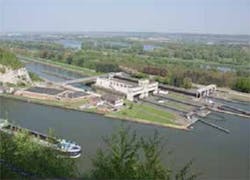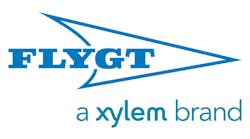Located on the Belgium/Netherlands border, the Lanaye Locks link the Albert and Juliana Canals, the latter of which is a side canal of the River Meuse. The three locks are a vital route between Northern and Southern Europe and have operated alongside each other since 1964, but as two of these are too narrow to accommodate even smaller convoy, the larger lock had over time become a serious bottleneck for canal traffic. For most of each year, high water levels in Northern Europe require that water in the canal network be directed towards the Netherlands, where it flows into the sea.
BESIX Group was selected for engineering, procurement and construction of a new lock, including the hydroelectric plant and the pump house. This new construction had to be fully integrated in the landscape and built so that it would be almost invisible for visitors. The construction started in March 2012 and was completed in September 2015.
“The construction of the fourth Lanaye lock is one of the largest civil engineering projects of the decade in Wallonia,” said Patrick Delperdange, senior operations manager for BESIX Civil Works. “BESIX finished this ambitious project within the agreed timeframe while also coordinating the electromechanical works, among them the realization of the hydroelectric power and pumping plant.”
Solution
Xylem was commissioned early in the project to help to address the challenges associated with seasonal water level changes in the canal. The pump and hydropower station had to fit between the locks and be virtually invisible. After performing a hydraulic model study, Xylem’s Flygt engineers proposed a station design concept that allows the installation of eight large CP3800 submersible pumps and five EL7585 hydroturbines in side-by-side chambers without interfering with each other during operation. The objective of the installed pumps is to add water to the Albert canal during the dry weather season, maintaining adequate levels for canal traffic. The low water season is expected to occur during the three summer months. The pump station is rated for 390 mgd, to compensate the average water loss through locks during the normal operation. For most of the year, high water levels in Northern Europe require that water in the canal network be released to the sea. The new 2.3-MW hydroelectric power plant will operate over eight months of the year when extra water is available in canal. Xylem delivered five Flygt submersible EL7585 hydroturbines, each of which was rated for 460-kW output.
“Inflow conditions in the turbines must be carefully regulated in order to avoid disruption to canal traffic in the main channel,” said Daniel Van de Gucht, EMEA key account manager, public utilities for Xylem. “Turbulence in the system can also result in energy losses and reduce the lifetime of the turbines.”
Results
Collaboration leads to success – BESIX Sanotec-Balteau and Xylem’s engineering capabilities and effective collaboration produced a compact solution that resulted in enhanced efficiency as well as a reduction in construction and maintenance costs. The client was impressed with the final outcome.
“Thanks to the engineering capabilities of BESIX Sanotec, CMI Balteau and Xylem, we could propose an alternative to the original scheme that was very attractive for the client,” said Adrien Theunissen, senior manager at BESIX Sanotec. “This resulted in enhanced efficiency and a reduction in construction and maintenance costs. The synergy between the partners contributed to a fruitful cooperation at all stages of the project.”



